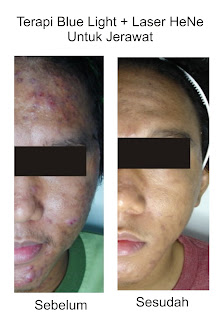Are you frustrated by acne? Do you lack self confidence due to acne? You need to understand some of the acne-causing factors.
Black Comedone (Black
Head) Vs White Comedones (White Head)
Other Forms of Acne
- Papulae is a small acne lesion (diameter 0.5 cm), reddish in color, and slightly prominent on skin surface.
- Pustules is a small acne lesion and tender because it contains pus. The base of pustules is usually reddish in color.
- Nodules is a larger acne lesion (swelling) and planted deeper than papulae. It has a round shape and usually painful.
- Cysts is also usually painful. It is planted deeper than nodules. Cysts contains fluid or semi solid matter. Nodules and cysts can result in big acne scars.
-->
Acne - Causing Factors
- Main acne - causing factor is hormonal activity that increases sebum production.
High level of sex hormone, Androgen, during puberty is the main culprit of acne.
Elevated Androgen and cortisol (a type of steroid hormone) levels also occur during stress. Stress hinders tissue recovery, thus exacerbate inflammation. Another acne - triggering hormone is elevated Lutenizing Hormone
(LH) level in women after ovulation and endocrine gland disorder (e.g. ovarium cysts and tumor).

